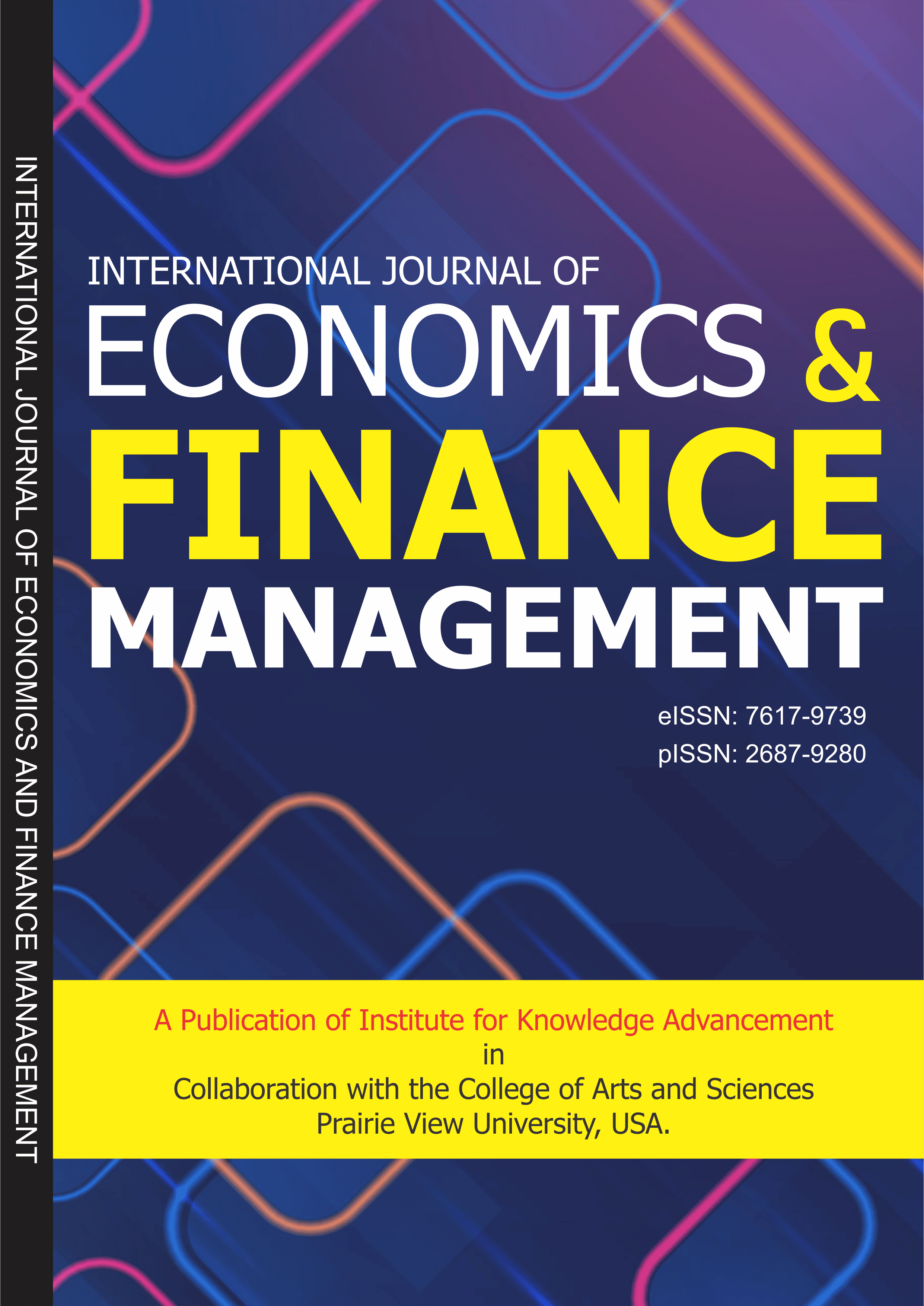INTERNATIONAL JOURNAL OF ECONOMICS AND FINANCE MANAGEMENT (IJEFM)
Capital Flight, Exchange Rate and Economic Growth in Nigeria: The Role of Institutional Quality
E-ISSN: 7617-9739
P-ISSN: 2687-9280
DOI: https://iigdpublishers.com/article/674
This study examines the relationship between capital flight, exchange rate volatility, and economic growth in Nigeria, with a particular focus on the moderating role of institutional quality. Using the Autoregressive Distributed Lag (ARDL) model and data spanning from 1990 to 2022, the findings reveal that capital flight negatively affects economic growth, although the effect is statistically insignificant. Exchange rate movements show a significant positive impact on growth, but when institutional quality interacts with exchange rates, the effect turns negative, highlighting the destabilizing influence of weak institutions. Institutional quality plays a crucial role in enhancing economic stability, as evidenced by its significant positive effect on long-term growth. Additionally, human capital development negatively impacts growth, suggesting inefficiencies in Nigeria’s labour market. The study underscores the need for policy reforms aimed at strengthening governance structures, enhancing exchange rate stability, and addressing institutional weaknesses to mitigate capital flight and foster sustainable economic growth.
Olurin Enitan Olurotimi PhD & Oladipo Samson Idowu
Acemoglu, D., Johnson, S., & Robinson, J. A. (2001). The colonial origins of comparative development: An empirical investigation. American Economic Review, 91(5), 1369–1401.
Agyeman, C. M., Sakyi, D., & Oteng-Abayie, E. F. (2022). Capital flight and economic growth in sub-Saharan Africa: A dynamic panel analysis. Journal of Economic Studies, 49(5), 876–895.
Ajayi, S. I. (1997). An analysis of external debt and capital flight in the severely indebted low-income countries in sub-Saharan Africa. IMF Working Paper No. 68.
Ajakaiye, O., Jerome, A., Nabena, D., & Alaba, O. (2015). Understanding the relationship between growth and employment in Nigeria. Brookings Institution, Africa Growth Initiative.
Akinlo, A. (2023). Institutional quality and capital flight in sub-Saharan Africa. African Development Review, 35(2), 210–225.
